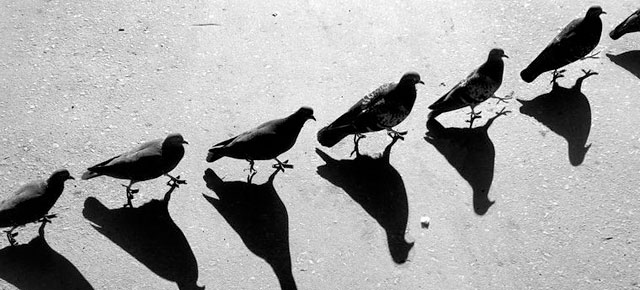Topic: Design is Order
The Big Ideas:
A system is a structure of interacting, intercommunicating components that operate individually and jointly to achieve a common goal.
Designing is creating conceptual and visual unity by giving order to diverse but interrelated and interdependent parts.
Standards:
As an art student, I will understand and demonstrate the ability to...
Understand and apply media, techniques, and processes with skill and confidence
Use design principles and functions to accomplish specific visual art problems
Choose and evaluate subject matter and ideas
Reflect upon and assess the characteristics and merits of my work
Make connections between my art and other aspects of life
Goal Concept:
Artistic activity involves conceptual, visual and psychological order.
Access Prior Knowledge:
“There is no work of art without a system.” ~ Le Corbusier
Dialogue > Le Corbusier on Art
New Information:
Design
The term design can be used either as a noun or as a verb. Design can refer to either an object or an action. As a noun, it can denote a plan, a drawing or a representation. As a verb it can refer to a way of thinking and doing or a way of applying organizational principles, or of endeavoring to achieve a conceptual and aesthetic gestalt. John Ruskin said, “Design is not the offspring of idle fancy; it is the studied result of accumulative observation.”
A good design must have a strong foundation or underlying formal order behind its visual content. To emphasize this, painter Christopher Pratt said, “A work of art has to stand on its own merits which are independent of its source. A geometric structure should be engineered, stressed, proportioned, calculated, and balanced with the same care we would bring to the design of a bridge or the cutting of a diamond.”
Master teacher Joseph Albers wrote a poem about design.
To design is
to plan
and to organize
to relate and to control.
In short it embraces
All means opposing disorder
and accident.
Therefore it signifies
a human need
and qualifies man’s
thinking and doing.
Artist Reference:
Instructional Strategy
Learning Activity
Apply Knowledge and Skills:
Create > Studio Activity: Organizational Geometrics
Goal: Create a well organized composition by substituting geometric shapes and form for figurative images.
Go to the Art Institute Chicago’s Modern art online > http://goo.gl/63vdFJ and select a reproduction of a representational art work. Reinterpret the composition using only geometric and free form shapes in place of the original figurative images. Maintain the compositional order and proportions of the original work but feel free to manipulate the shapes and forms with value ranges, textures, patterns and colors. View the process here > http://goo.gl/g83ORM
*Alternate > If accurate rendering is what you want to do, this studio activity’s goal can still be achieved by doing something similar to the works of Giuseppe Arcimboldo. View his works here > http://goo.gl/Uxh37p
Trigger Mechanisms:
Abstract, repeat, transform
Materials:
Paper, paint, markers, mix-media
Create > Studio Activity: Design by Chance
Goal: Create a random ordered design using serendipitous or chance methods.
Cut and tear colored construction paper into various geometric and organic shapes. Without consciously controlling the placement, drop the shapes, one by one, onto a larger sheet of paper. Glue the pieces exactly where they fell. Repeat the procedure until all of the shapes are attached to the surface.
Next, make an adjustable viewfinder by cutting out two “L”-shaped pieces of tagboard and clipping them together. With the viewfinder, search the collage for an aesthetically pleasing composition.
Finally, replicate the collage composition in the form of a painting. The goal is to match the shapes, colors, tones and textures of the collage as accurately as possible.
Trigger Mechanisms:
Combine, transfer, render
Visual examples
Materials:
Paper, pencil, paint, viewfinder
Generalize, Publish and Reflect:
“The details are not the details. They make the design.” ~ Charles Eames
Instructional Strategy
Learning Activity
Notes
Instructional Strategy
Learning Activity





